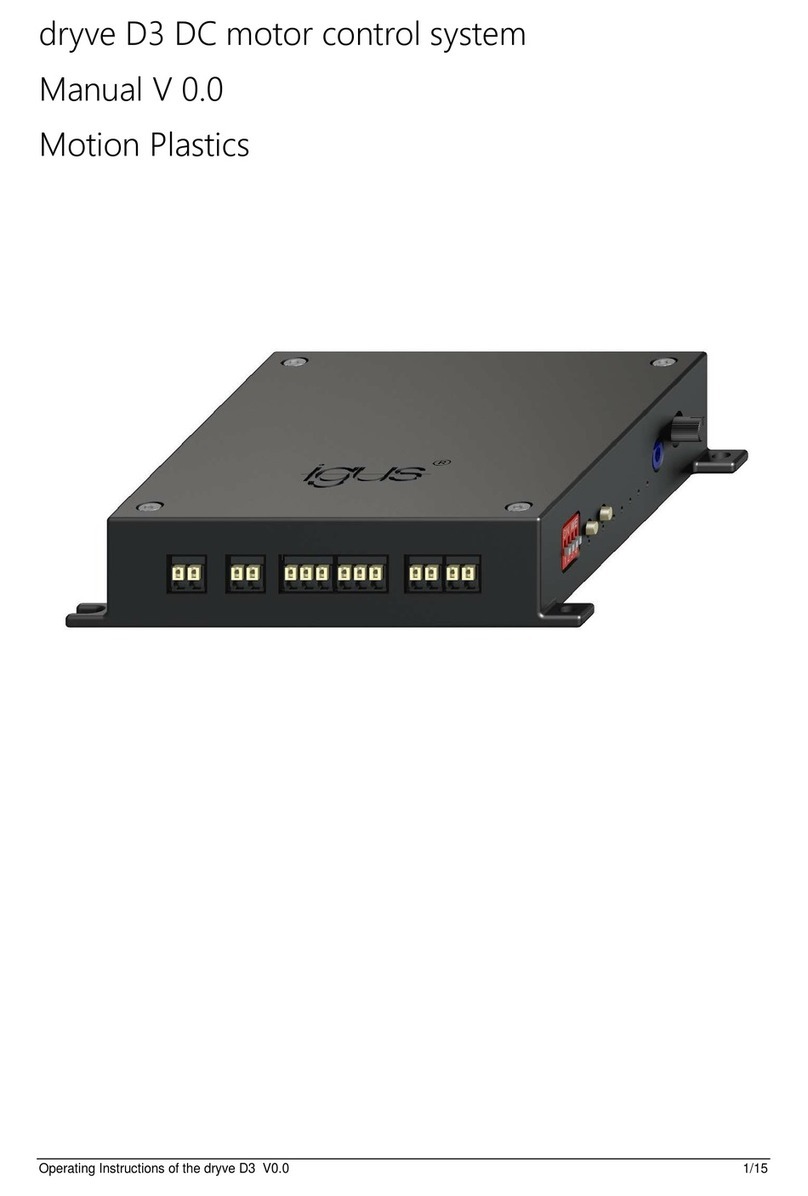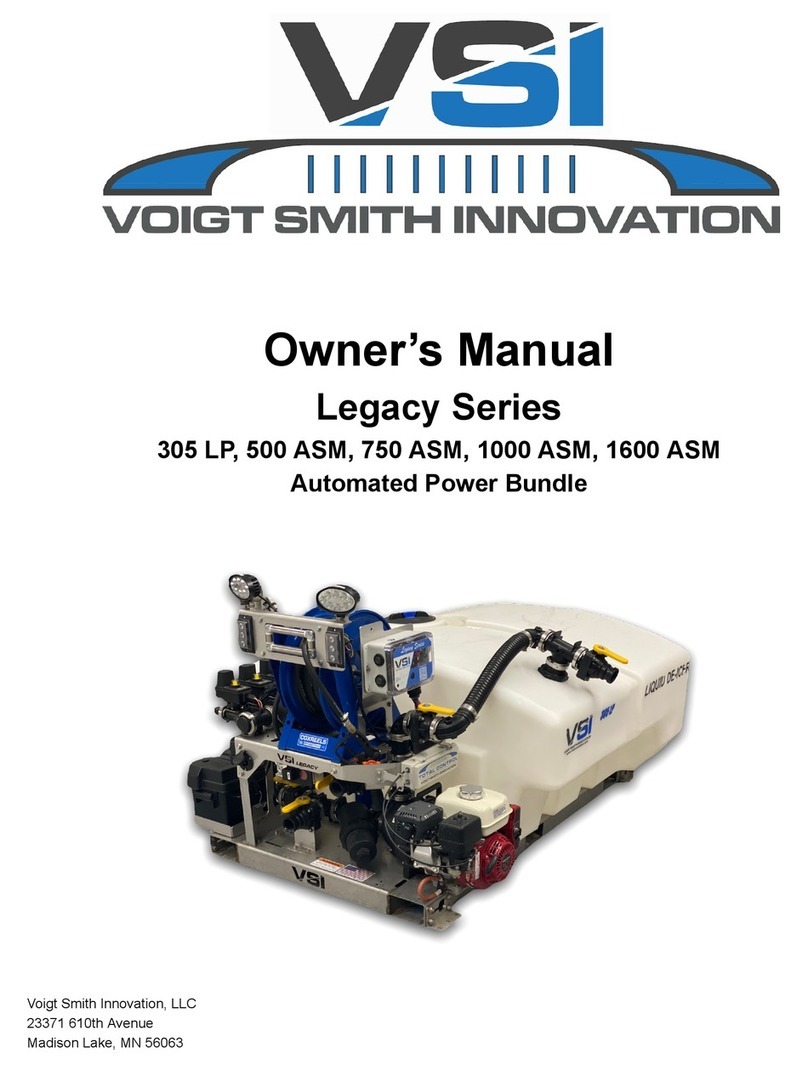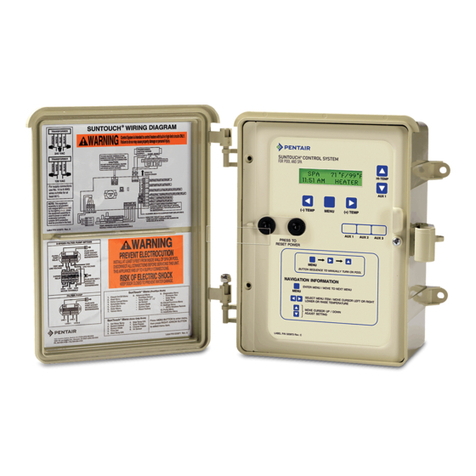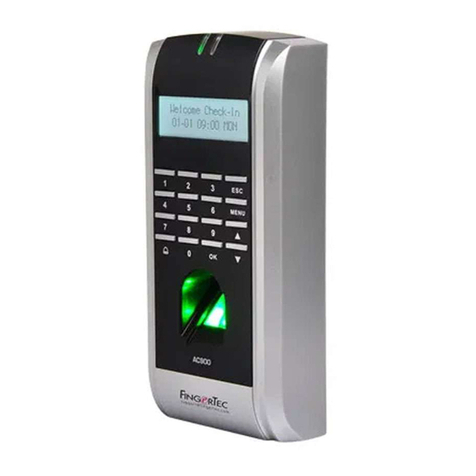B&B ARMR 773 Series User manual

INSTALLATION
MANUAL
MODEL 773 SERIES
REINFORCED CRASH ARM
B&B ARMR: A Division of B&B Roadway and Security Solutions
Page 1 of 38
0773-9001 Rev D
B&B ARMR reserves the right to change any information concerning product or specification without notice or obligation.
INSTALLATION
MANUAL
MODEL 773
Reinforced Crash Arm
Vehicle Barrier
5900 South Lake Forest Drive
Ste. 230
McKinney, TX 75070
Phone: (800) 367-0387 | Fax: (972) 385-9887
Web:www.bb-armr.com | E-mail: [email protected]
TECH SUPPORT
MADE IN THE USA

INSTALLATION
MANUAL
MODEL 773 SERIES
REINFORCED CRASH ARM
B&B ARMR: A Division of B&B Roadway and Security Solutions
Page 2 of 38
0773-9001 Rev D
B&B ARMR reserves the right to change any information concerning product or specification without notice or obligation.
Contents
System Installation Record..................................................................................................................................... 4
1. INTRODUCTION ...................................................................................................................................... 5
1.1. Preface...................................................................................................................................................... 5
1.2. Safety Considerations............................................................................................................................... 5
1.3. Safety Symbols......................................................................................................................................... 6
1.4. Acronyms................................................................................................................................................. 6
1.5. How to Contact Us................................................................................................................................... 8
2. ORIENTATION ......................................................................................................................................... 8
2.1. Overview.................................................................................................................................................. 8
2.2. Arm........................................................................................................................................................... 9
2.3. Stanchion.................................................................................................................................................. 9
2.4. Drive System.......................................................................................................................................... 11
2.4.1. Electric............................................................................................................................................ 11
2.4.2. Hydraulic......................................................................................................................................... 11
2.4.3. Manual ............................................................................................................................................ 12
2.5. Options................................................................................................................................................... 12
3. INSTALLATION ..................................................................................................................................... 12
3.1. Introduction............................................................................................................................................ 12
3.2. Pre-Installation Considerations .............................................................................................................. 13
3.3. Installation Instructions.......................................................................................................................... 13
3.3.1. Step 1 –Excavation ........................................................................................................................ 14
3.3.2. Step 2 –Conduit and Rebar Installation......................................................................................... 14
3.3.3. Step 3 –Concrete Emplacement..................................................................................................... 18
3.3.4. Step 4 –Stanchion Installation ....................................................................................................... 18
3.3.5. Step 5 –Hydraulic Unit Installation (For models 773HD/HR only).............................................. 19
3.3.6. Step 6 –Control System Installation (For model series 773Ex or 773Hx only) ............................ 20
3.3.7. Step 7 –Arm Installation................................................................................................................ 20
3.3.8. Step 8 –Final Assembly................................................................................................................. 24
3.3.9. Options............................................................................................................................................ 27
3.3.10. Final Pre-operation Checklist....................................................................................................... 28
4. INITIAL STARTUP PROCESS............................................................................................................... 28
4.1. Startup Sequence.................................................................................................................................... 29
5. TROUBLESHOOTING............................................................................................................................ 30

INSTALLATION
MANUAL
MODEL 773 SERIES
REINFORCED CRASH ARM
B&B ARMR: A Division of B&B Roadway and Security Solutions
Page 3 of 38
0773-9001 Rev D
B&B ARMR reserves the right to change any information concerning product or specification without notice or obligation.
5.1. Model 773 Troubleshooting Guide........................................................................................................ 30
6. APPENDIX............................................................................................................................................... 32
6.1. Drawings ................................................................................................................................................ 32
6.1.1. 773E/H Series General Layout ....................................................................................................... 32
6.1.2. 773E/H Series Foundation and Clear Opening Details................................................................... 33
6.1.3. 773M Series General Layout .......................................................................................................... 34
6.1.4. 773M Series Foundation and Clear Opening Details ..................................................................... 35
6.1.5. Rebar Cage Details ......................................................................................................................... 36
6.2. Specifications......................................................................................................................................... 37
Limited Warranty.................................................................................................................................................. 38

INSTALLATION
MANUAL
MODEL 773 SERIES
REINFORCED CRASH ARM
B&B ARMR: A Division of B&B Roadway and Security Solutions
Page 4 of 38
0773-9001 Rev D
B&B ARMR reserves the right to change any information concerning product or specification without notice or obligation.
System Installation Record
To assist in documenting the products installed in your system, please take a minute to record the following
reference information. This information can be located on the blue B&B ARMR model number plate found on
the 773 drive unit.
Additional columns are added for your convenience in documenting other components in the system.
Model 773 Barrier
Site:
Job #:
Date:
Installer:
Serial Number:
Model Number:
Voltage:
Phase:
Label 1 - B&B ARMR Blue Product Label with important product data

INSTALLATION
MANUAL
MODEL 773 SERIES
REINFORCED CRASH ARM
B&B ARMR: A Division of B&B Roadway and Security Solutions
Page 5 of 38
0773-9001 Rev D
B&B ARMR reserves the right to change any information concerning product or specification without notice or obligation.
DO NOT DISCARD THIS MANUAL!
1. INTRODUCTION
1.1. Preface
Welcome!
Congratulations on your purchase of a B&B ARMR vehicle barrier. In addition to providing detailed operating
instructions, this manual describes how to install, start-up and troubleshoot your vehicle barrier. This manual
should be fully reviewed in advance of any actual work being done on the equipment.
If you require additional assistance with any aspect of your vehicle barrier's installation or operation, please
contact B&B before proceeding.
With years of experience in all aspects of perimeter security and related disciplines, our products are used
throughout the world to control access and to protect people, equipment, and facilities. We offer a broad range
of vehicle barrier and related perimeter security services:
Turnkey installations.
Routine barrier preventative maintenance or emergency repairs (including work on non-B&B products).
Spare or replacement parts.
Custom designs or special installations.
Equipment upgrades or modernization.
Ancillary security equipment such as security guard enclosures, access control points, security lighting, and
many other security related products.
Technical support via telephone and possible on-site support with advanced scheduling.
The equipment covered by this manual is available with a vast variety of options and accessories. See the
Specification Chart at the end of this manual for general unit specifications. Consult the unit labels, approved
submittal package, order acknowledgment and other manuals for details on the options, accessories and related
specifications provided with the equipment on each project.
The instructions pertaining to the Model 773 Reinforced Crash Arms are intended as a guide and do not
supersede local or national codes. Consult local codes before installation.
1.2. Safety Considerations
B&B does not assume responsibility for injury to persons or property during installation, operation, or
maintenance. As the installer, you are responsible for correct, safe installation and first operation of this
equipment. You must follow the specific instructions and safety precautions located in this manual. In addition,
you shall:
Follow the safety standards of the Occupational Safety and Health Administration (OSHA), as well as other
applicable federal, state, and local safety regulations and industry standards and procedures.
For installation outside the United States, installers must also follow applicable international, regional and
local safety standards.
Engage only trained and experienced staff to install and operate the equipment.
Ensure that any modifications or repairs are performed correctly, using the correct tools and equipment, by
properly trained technicians.

INSTALLATION
MANUAL
MODEL 773 SERIES
REINFORCED CRASH ARM
B&B ARMR: A Division of B&B Roadway and Security Solutions
Page 6 of 38
0773-9001 Rev D
B&B ARMR reserves the right to change any information concerning product or specification without notice or obligation.
1.3. Safety Symbols
The following symbols are used in this document to alert the reader to areas of potential hazard:
DANGER indicates an imminently hazardous situation which, if not avoided, will result in death
or serious injury.
WARNING indicates a potentially hazardous situation which, if not avoided, could result in death
or serious injury.
CAUTION identifies a hazard which could lead to damage to the machine, damage to other
equipment and/or environmental pollution.
Usually an instruction will be given, together with a brief explanation.
NOTE is used to highlight additional information which may be helpful to you.
TIP indicates time saving information.
LIGHTNING FLASH with arrowhead symbol, within an equilateral triangle, is intended to alert
the user to the presence of “dangerous voltage" within product's enclosure that may be of
sufficient magnitude to constitute a risk of electric shock.
1.4. Acronyms
The following is a list of acronyms common to the industry and used throughout this manual.
ASTM –American Society for Testing and Materials: A voluntary leader in the development of
consensus standards for product definition, testing and certification. Most perimeter security products
are tested by 3rd party testing/engineering agencies, using ASTM standards.
BBU –Battery Backup Unit: An optional enclosure containing components and batteries necessary to
run control electronics and/or barrier actuators.
CO –Clear Opening: The opening distance of a barrier that is unimpeded or “clear” of any obstructions.
For wedge barriers, this typically refers to the width of the attack plate/assembly size. For arm barriers,
this commonly refers to the distance between stanchions that is clear to traffic. Clear opening does not
mean overall size or in the case of arm barriers, arm length.

INSTALLATION
MANUAL
MODEL 773 SERIES
REINFORCED CRASH ARM
B&B ARMR: A Division of B&B Roadway and Security Solutions
Page 7 of 38
0773-9001 Rev D
B&B ARMR reserves the right to change any information concerning product or specification without notice or obligation.
DCA –Drive Clevis Assembly: A group of components (assembly) specific to the 828 Series of
products used to interface the actuator with the barrier. This assembly includes bolts, pins, blocks and
other components.
DOS –Department of State: An abbreviation commonly used to refer to Department of State crash
ratings such as, K4, K8 and K12. Most DOS requirements have been replaced with newer ASTM
standards for crash rating.
EFO –Emergency Fast Operation: A term used to describe a situation where a barrier operates at an
emergency maximum speed. Not all products are capable of EFO. EFO is typically achieved by using
specialty electro-linear actuators or pressure accumulators for hydraulically driven systems. EFO is
normally activated by an “Emergency” button on a control panel or through software.
EPU –Electric Power Unit: A control enclosure used to house the various control devices for an
electrically actuated barrier. This enclosure is typically mounted remotely, away from the barrier and is
connected via underground conduit. Some units may attach the enclosure directly to the barrier, as seen
on the 77X series. Typically the control systems operate an electro-linear actuator on the barrier.
Ft-lbs. –Foot Pounds: A unit of work equal to a force of one pound-force through a linear displacement
of one foot. This is often used to express torque required to secure fasteners, such as bolts and is
commonly represented as Lb-ft (Pound-Feet) to eliminate confusion between torque and work units.
HPU –Hydraulic Pumping Unit: A control enclosure used to house the various control and pumping
components for a hydraulically actuated barrier. This enclosure is typically mounted remotely, away
from the barrier and is connected to the barrier via underground conduit and hydraulic high pressure
hoses. Some enclosures may attach directly to the barrier, as seen on the 77X series. The control systems
operate a hydraulic pump and valve system used to drive hydraulic cylinders on the barrier.
IM –Installation Manual: Is an instructional manual that explains the installation requirements and steps
for a product series.
LED –Light Emitting Diode: A type of light that consumes low energy and is typically low voltage
(below 12V).
MLB –Maintenance Lock Bar: A device used to mechanically lock the linkage arms of an 828 Series
Wedge Barrier during maintenance work.
O&M –Operation and Maintenance: Refers to a type of instructional manual used to explain the
operation and maintenance requirements of a product series.
PLC –Programmable Logic Controller: A programmable solid state electronic control device that
controls machinery by using predetermined program logic.
PSF –Pounds Force per square foot: A unit of measure for pressure over a given area.
UL –Underwriters Laboratory: A 3rd party standards development, testing and certification agency.

INSTALLATION
MANUAL
MODEL 773 SERIES
REINFORCED CRASH ARM
B&B ARMR: A Division of B&B Roadway and Security Solutions
Page 8 of 38
0773-9001 Rev D
B&B ARMR reserves the right to change any information concerning product or specification without notice or obligation.
1.5. How to Contact Us
If you have any questions or experience any problems with your vehicle barrier, or if we can help you with any
other facility security issues, please contact us:
Tech Support:
B&B ARMR
5900 South Lake Forest Drive, Suite 230
McKinney, TX 75070 USA
Telephone: 800.367.0387
Fax: 972.385.9887
E-mail: [email protected]
E-mail2: techsupport@bb-armr.com
2. ORIENTATION
2.1. Overview
The B&B ARMR Model 773 Reinforced Crash Arm Vehicle Barrier is an arm-type barrier hinged at one
side such that the arm can be raised and lowered to restrict and control vehicle access. The arm is reinforced
with an interior energy absorption material to increase the barrier's vehicle stopping capability.
Figure 1- Model 773HD Reinforced Crash Arm Barrier
Receiver
Stanchion
Arm
Drive
Stanchion
Drive
System
Receiver
Cover
Control
Enclosure

INSTALLATION
MANUAL
MODEL 773 SERIES
REINFORCED CRASH ARM
B&B ARMR: A Division of B&B Roadway and Security Solutions
Page 9 of 38
0773-9001 Rev D
B&B ARMR reserves the right to change any information concerning product or specification without notice or obligation.
2.2. Arm
The arm is an aluminum extrusion and is marked with red and white safety tape (alternate
colors available). The energy absorption material is contained inside the arm and
anchored with retention pins at either end. The impact energy is absorbed by the internal
material and transferred to the foundation through the drive and receiver stanchion
assemblies.
Figure 2 –Arm Assembly
2.3. Stanchion
The drive and receiver stanchions are constructed using heavy gauge steel.
The drive stanchion Figure 3 - Drive Stanchion (Model 773HD Shown) operates
with internal bearings on a steel hinge pin that allows the arm to open vertically.
The receiver stanchion Figure 4 - Receiver Stanchion directs and captures the
arm when it is lowered. The receiver stanchion has a removable security latching
device to prevent unauthorized operation when the barrier is unattended.
Do not attempt to operate the barrier when the latch device is installed.
Carriage
Receiver Side
Retention Pin
Pivot Point
Reflective
Safety
Tape

INSTALLATION
MANUAL
MODEL 773 SERIES
REINFORCED CRASH ARM
B&B ARMR: A Division of B&B Roadway and Security Solutions
Page 10 of 38
0773-9001 Rev D
B&B ARMR reserves the right to change any information concerning product or specification without notice or obligation.
Figure 3 - Drive Stanchion (Model 773HD Shown)
Figure 4 - Receiver Stanchion
The barrier has an exterior-mounted, dampening strike pad. When the barrier operates at
the design speed, this damper reduces any whipping action by the arm as it comes to the
full, raised position.
Both the drive and receiver stanchion are bolted to an anchor assembly cast into a
subterranean concrete pour (see Figure 5 –Subterranean Foundations).
Security
Latching
Device
Hinge Pin
Control/Drive
Enclosure
Hydraulic
Cylinder
Receiver –
Arm Strike
Pad
Pivot Bearing
(1x per side)
Tool Drop
Plate
Drive –
Arm Strike
Pad
Marshalling
Box

INSTALLATION
MANUAL
MODEL 773 SERIES
REINFORCED CRASH ARM
B&B ARMR: A Division of B&B Roadway and Security Solutions
Page 11 of 38
0773-9001 Rev D
B&B ARMR reserves the right to change any information concerning product or specification without notice or obligation.
Figure 5 –Subterranean Foundations
2.4. Drive System
The drive system options are:
2.4.1.Electric
The 773ED, or remote mount version 773ER, barrier operates with a self-contained
electric drive actuator. A 773ED/ER contains the actuator components, the electrical
components and a programmable logic controller pre-programmed with the barrier's
operating logic.
The unit includes a manual operation override so the arm can be raised and lowered
during power outages.
Refer to the separate Installation (IM) and Operation and Maintenance (O&M) manual
for specifics on the Electric drive.
2.4.2. Hydraulic
The 773HD, or remote mount version 773HR, barrier operates with a self-contained
hydraulic pumping (HPU) unit. A 773HD/HR contains the hydraulic pump, control
valves and connections and the programmable logic controller pre-programmed with the
Subterranean
concrete foundation
w/ rebar
reinforcement
Cast Retention
Plate w/Anchor
Bolts
Drive
Foundation
Receiver
Foundation

INSTALLATION
MANUAL
MODEL 773 SERIES
REINFORCED CRASH ARM
B&B ARMR: A Division of B&B Roadway and Security Solutions
Page 12 of 38
0773-9001 Rev D
B&B ARMR reserves the right to change any information concerning product or specification without notice or obligation.
barrier's operating logic. Miscellaneous electrical components power the HPU and
control circuits.
The system includes a manual operation override so the arm can be raised and lowered
during power outages.
Refer to the separate Installation (IM) and Operation and Maintenance (O&M) manual
for specifics on the Hydraulic drive unit.
2.4.3. Manual
The 773MD barrier is manually operated by designated personnel. A standard 773MD
contains no electrical components, but may include options or accessories that require
electrical connections (e.g., led lights, electromagnetic lock).
Consult the unit labels, approved submittal package or order acknowledgment on the
options and accessories related to each project.
2.5. Options
The Model 773 Reinforced Crash Arm Vehicle Barrier is available with the following
options. Consult your approved submittal package or purchase order to determine
whether your unit has any optional equipment.
Various control panel options (touch screen panels, multiple panels, remote
mounting)
Integrated LED Lights to increase the arm’s visibility
Cold weather package (includes stanchion heaters)
Electromagnetic Lock
Battery Back Up System
Custom Painted Finish
Additional system safety devices may be required with this barrier system:
In-ground loop detector.
Pole mounted traffic lights.
IR beams.
Safety Edge Strips.
3. INSTALLATION
3.1. Introduction
The section describes the procedure to set-up and configure a generic Model 773 vehicle
barrier for first-time operation. Model 773 is designed for quick and easy installation;
however, every site is different and each Model 773 varies due to the choice of options or
special design features. Accordingly, the instructions below may have to be varied
slightly for your particular installation.

INSTALLATION
MANUAL
MODEL 773 SERIES
REINFORCED CRASH ARM
B&B ARMR: A Division of B&B Roadway and Security Solutions
Page 13 of 38
0773-9001 Rev D
B&B ARMR reserves the right to change any information concerning product or specification without notice or obligation.
Please refer to the unit label, approved project submittal package, order acknowledgment,
or other manuals for details on the options and accessories provided on your Model 773.
If you need help, or are unclear about any of these instructions, please contact B&B prior
to installation for assistance.
3.2. Pre-Installation Considerations
Before beginning site excavation and barrier installation, note the following important
considerations.
Inspect the site and verify there are no underground utilities or overhead wires or
obstructions in the excavation area.
If possible, locate the installation away from routine foot traffic to reduce the chance
for pedestrian injury from the barrier's moving arm.
Soil compression strength around the barrier shall be a minimum of 1600 PSF (76.6
kN/m2) or per submittal guidelines. Compact and add gravel where necessary to
ensure solid soil base. Consult B&B Technical Support if soil compressive strength
does not meet this minimum requirement.
The barrier operates best when installed on a level surface. Both drive and receiver
stanchions should be plumb and level. Level site side-to-side prior to barrier
installation.
Excavate install site to accommodate a minimum concrete pad dimension shown to
match size of the barrier you have purchased. If site excavation cannot be completed
per these minimum dimensions, please contact B&B Technical Support.
Before you begin installation, you will need the following available on site prior to
installation:
Equipment for excavation, soil compaction, removal and disposal of spoilage
Concrete placing and finishing tools
Steel re-bar (can be ordered in optional installation kit)
Lifting equipment capable of moving and setting the Model 773 components into
place
Mix Concrete
Demolition tools and/or equipment.
Various hand tools for tightening screws, nuts and other fasteners
Battery Powered hand drill
¾ in. or 18 mm socket
Marking flags/paint and construction leveling string
3.3. Installation Instructions
Installing a Model 773(Ex, Hx, MD) is an eight (8) step process. Refer to Table 1 -
Excavation Summary for a quick overview of installation specifications.
A more in-depth list of specifications and drawings can be found in Section 6.

INSTALLATION
MANUAL
MODEL 773 SERIES
REINFORCED CRASH ARM
B&B ARMR: A Division of B&B Roadway and Security Solutions
Page 14 of 38
0773-9001 Rev D
B&B ARMR reserves the right to change any information concerning product or specification without notice or obligation.
3.3.1. Step 1 –Excavation
The excavation dimensions detailed in Table 1 - Excavation Summary are the minimum
requirements needed to maintain Model 773(Ex, Hx, MD) specified crash rating as
defined by the submittal package.
3.3.1.1. The drawing titled Drawing 2 –773E/H Series Foundation and Clear
Opening Details (see Section 6 at the end of this manual) details GENERIC
foundation pads, clear opening and other critical dimensions. Refer to the
submittal package drawings for project specific dimensioning.
3.3.1.2. Measure and mark the area to be excavated with flags or marking paint as
indicated by the project submittal package.
Final pad positioning should be within ½ in. (13 mm) dimensional
tolerance to assure proper alignment of the arm with the stanchions.
3.3.1.3. Excavate the hole for the Drive and Receiver Stanchion.
3.3.1.4. Compact the soil on all sides of each hole.
3.3.1.5. To support the concrete foundations of the 773 Barrier and to
ensure the barrier can properly stop vehicles at the designed rating, make
sure surrounding soil is capable of withstanding the minimum compaction
requirements.
Table 1 - Excavation Summary
3.3.2. Step 2 –Conduit and Rebar Installation
Perform the following steps, to install the conduit for the power and control circuits,
referring to the Project Submittal or generic drawing titled Drawing 2 –773E/H Series
Foundation and Clear Opening Details (see Section 6 at the end of this manual).
IMPERIAL
STANCHION
EXCAVATION
(L x W x H in
inches)
REBAR
Type #4 Deformed, Grade
60
SOIL
Min
Compaction
CONCRETE
4000 PSI minimum
Drive
60 x 60 x 48
Approx. 63 ft.
1,600 PSF
Approx. 3.7 cubic yards
Receiver
60 x 60 x 48
Approx. 63 ft.
1,600 PSF
Approx. 3.7 cubic yards
METRIC
STANCHION
EXCAVATION
(L x W x H in
cm)
REBAR
Type #4 Deformed, Grade
60
SOIL
Min
Compaction
CONCRETE
27.6 MN/m2minimum
Drive
152 x 152 x 122
Approx. 19.2 m
76.6 kN/m2
Approx. 2.8 cubic meters
Receiver
152 x 152 x 122
Approx. 19.2 m
76.6 kN/m2
Approx. 2.8 cubic meters

INSTALLATION
MANUAL
MODEL 773 SERIES
REINFORCED CRASH ARM
B&B ARMR: A Division of B&B Roadway and Security Solutions
Page 15 of 38
0773-9001 Rev D
B&B ARMR reserves the right to change any information concerning product or specification without notice or obligation.
The installation requires a minimum of three conduits. One minimum 1 in. (25 mm)
diameter PVC conduit for the power cables, and two minimum ¾" (19 mm) diameter
PVC conduit for the control and safety loop cables. See Table 2 –773 Series
recommended conduit and wiring sizing for basic 773 Series requirements. Additional
conduits may be required for traffic lights, loop detectors and other options. See options
section for conduit information.
All conduits, fittings, sweeps, and couplings must be electrical grade (gray
color); do not use plumbing type (white color).
773 SERIES RECOMMENDED CONDUIT & WIRE SIZING
DESCRIPTION
WIRES
AWG
VOLTAGE
CURRENT
CONDUIT
NOTES
Primary Power
4
10
Varies
20 A
1 in. (25 mm)
< 100 ft. (31 m) one
way
Safety Loops
2
14
n/a
n/a
¾ in. (19 mm)
by others
Control Panel
18
18
24 VDC
50 mA
¾ in. (19 mm)
1x dual lane panel
only
Options
See Section 3.3.9.
Table 2 –773 Series recommended conduit and wiring sizing
Contact B&B if you are unclear about the conduit requirements for your installation.
3.3.2.1. Rebar cage –Construct two (2) rebar cages as specified in Drawing 5 –773
Rebar Cage Details (see Section 6 at the end of this manual). Build cages using
rebar as specified in Table 1 - Excavation Summary and found in Section 6
specifications. Tie the rebar with #4 ties as specified in section 6
Specifications.
An Installation Kit, KTPI-773R, containing partially assembled rebar cages
is available from B&B as an option. Please refer to the submittal package
for details on ordered options. If you have questions on Installation Kits,
please contact B&B for assistance.

INSTALLATION
MANUAL
MODEL 773 SERIES
REINFORCED CRASH ARM
B&B ARMR: A Division of B&B Roadway and Security Solutions
Page 16 of 38
0773-9001 Rev D
B&B ARMR reserves the right to change any information concerning product or specification without notice or obligation.
Figure 6 - Rebar Cage Representation
3.3.2.2. Retention Placement –Place Supplied Retention plates and bolts Figure 7 -
Retention Plate and Anchor Bolts into rebar cage. Align the bolts such that
they do not interfere with the rebar cage. See Drawing 5 –773 Rebar Cage
Details for Retention Plate Placement. Tie the plate to the middle side bars to
hold firmly in place.
Figure 7 - Retention Plate and Anchor Bolts

INSTALLATION
MANUAL
MODEL 773 SERIES
REINFORCED CRASH ARM
B&B ARMR: A Division of B&B Roadway and Security Solutions
Page 17 of 38
0773-9001 Rev D
B&B ARMR reserves the right to change any information concerning product or specification without notice or obligation.
3.3.2.3. Place the rebar cage containing the anchor bolts with retention plate into the
center of each excavated hole.
The rebar cage should fit approximately 2.75 in. (70 mm) above the lower
surface of the finished foundation and approximately 2.25 in. (57 mm)
below the uppermost surface of the finished foundation.
The anchor bolts must protrude 2.5 in. (64 mm) above the upper level of
the finished foundation to ensure enough thread is available to secure the
stanchions.
3.3.2.4. There are two (2) remaining retention plates. These plates are meant to be
attached to field supplied 2x4 or 4x4 boards. These boards will span across the
foundation excavation and will hold the cage and attached anchor bolts in place
during the concrete pour. Place one (1) on top of each anchor bolt assembly to
act as a template. Use the supplied 1”-8 anchor nuts to hold the anchor bolts in
place during the pour.
Anchor Bolt
Retention Plate
Anchor
Bolts
Anchor Bolt
Retention Plates
as templates
Middle Bars
Tie Encased
Retention Plates
to middle bar
1”-8 Nuts to hold
the anchor bolts
in place
Mounting holes –
4x places –for
attaching field
supplied
excavation spans

INSTALLATION
MANUAL
MODEL 773 SERIES
REINFORCED CRASH ARM
B&B ARMR: A Division of B&B Roadway and Security Solutions
Page 18 of 38
0773-9001 Rev D
B&B ARMR reserves the right to change any information concerning product or specification without notice or obligation.
Figure 8 - Anchor Bolt Template layout
3.3.2.5. See Drawing 5 –773 Rebar Cage Details in Section 6 for details on Retention
Plate, Anchor Bolt and Conduit placement within the foundation.
3.3.2.6. Place string lines on either side of the Drive Foundation and run the lines
across the roadway to determine the Receiver stanchion’s location. Keep the
string lines parallel and accurately measure the clear opening length. This
length is the distance between the inside (side facing the road) faces of the
Drive stanchion and the Receiver stanchion.
3.3.2.7. Adjust the Receiver mounting bolts and supplied templates by measuring
between the anchor bolts and ensure both sides are positioned correctly per
submittal.
3.3.2.8. Pull a string from the center of the Drive stanchion anchor plate and
perpendicular to the axle and verify it falls directly on the center of the
Receiver stanchion anchor plate.
3.3.2.9. Verify the distance between the two bolt anchors measures the specified clear
opening length for your barrier. Refer to the submittal package details for these
dimensions.
3.3.3. Step 3 –Concrete Emplacement
3.3.3.1. Fill the Drive and Receiver Stanchion excavations with specified concrete and
finish the concrete surface.
3.3.3.2. Remove any splattered concrete from the above grade anchor bolts and
conduits.
Add plastic wrap to the above grade portion of the anchor bolts or conduits
to protect them from concrete splatter. Avoid plastic wrap below concrete
grade.
3.3.3.3. Verify the mounting bolts are properly positioned by repeating Section
3.3.2.7.-3.3.2.10. Verify the anchor bolts protrude 2.5 in. (64 mm) above the
final foundation grade. Quickly adjust the bolts and the supplied template if
necessary.
3.3.3.4. Allow the concrete to cure, account for environment and in compliance with
foundation requirements.
3.3.4. Step 4 –Stanchion Installation
3.3.4.1. After the concrete has cured, remove any templates and any other alignment
tools.
3.3.4.2. Lift the Drive stanchion into position. Lower the stanchion onto the anchor
bolts.

INSTALLATION
MANUAL
MODEL 773 SERIES
REINFORCED CRASH ARM
B&B ARMR: A Division of B&B Roadway and Security Solutions
Page 19 of 38
0773-9001 Rev D
B&B ARMR reserves the right to change any information concerning product or specification without notice or obligation.
Bolts should extend 1.5 in. (38 mm) above the stanchion once installed.
3.3.4.3. Install the supplied flat washers, and 1”-8 nuts onto the protruding bolts.
3.3.4.4. Torque nuts to 150 FT-LBS (203 Nm).
Figure 9 - Drive Stanchion Installation
Tighten to 150 FT-LBS (203 Nm)
3.3.4.5. Repeat process for Receiver Stanchion.
Figure 10 - Receiver Stanchion Installation
Tighten to 150 FT-LBS (203 Nm)
3.3.5. Step 5 –Hydraulic Unit Installation (For models 773HD/HR only)
Refer to the HPU Installation manual.

INSTALLATION
MANUAL
MODEL 773 SERIES
REINFORCED CRASH ARM
B&B ARMR: A Division of B&B Roadway and Security Solutions
Page 20 of 38
0773-9001 Rev D
B&B ARMR reserves the right to change any information concerning product or specification without notice or obligation.
3.3.6. Step 6 –Control System Installation (For model series 773Ex or 773Hx only)
For this section, refer to the Electric or Hydraulic Drive Installation and O&M manual
that came with the unit for more details.
3.3.7. Step 7 –Arm Installation
Arm should be installed in the horizontal (closed) position.
3.3.7.1. Lift barrier arm with crane or hoist and lower into position over drive
stanchion.
3.3.7.2. Align the pin holes in the arm with the bearing holes in the Drive Stanchion.
3.3.7.3. Insert hinge pin from one side of the Drive stanchion thru limit sensor pack,
both bearings (interior of stanchion uprights) and arm. Do not tighten any
screws, bolts or bearings at this point.
Installed hinge pin should NOT extend beyond the Drive stanchion on
either side.
Figure 11 - Arm installation process
Hinge Pin
Sensor
Pack
Bearing Holes
- Stanchion
Pin Hole -
Arm
This manual suits for next models
8
Table of contents
Other B&B ARMR Control System manuals
Popular Control System manuals by other brands
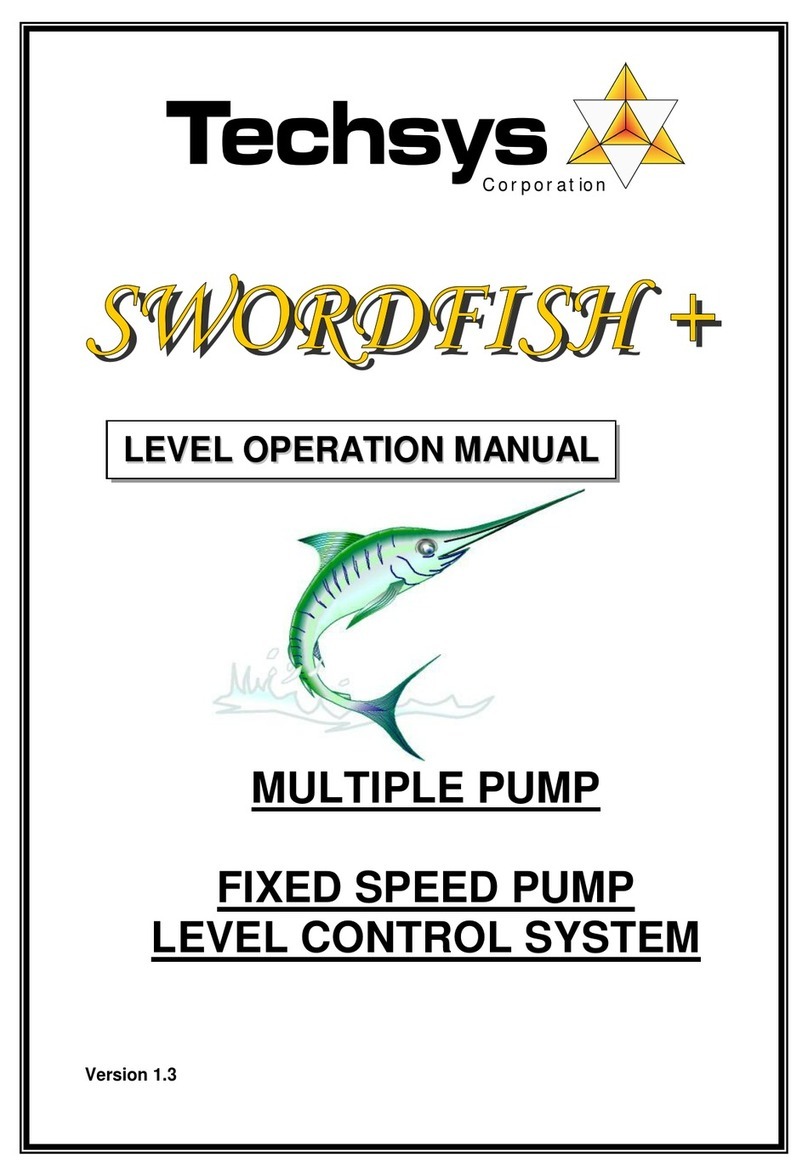
Techsys
Techsys SWORDFISH+ Operation manual
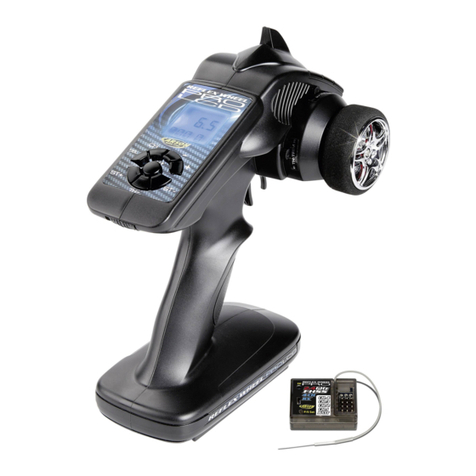
Carson
Carson Reflex Wheel Pro instruction manual
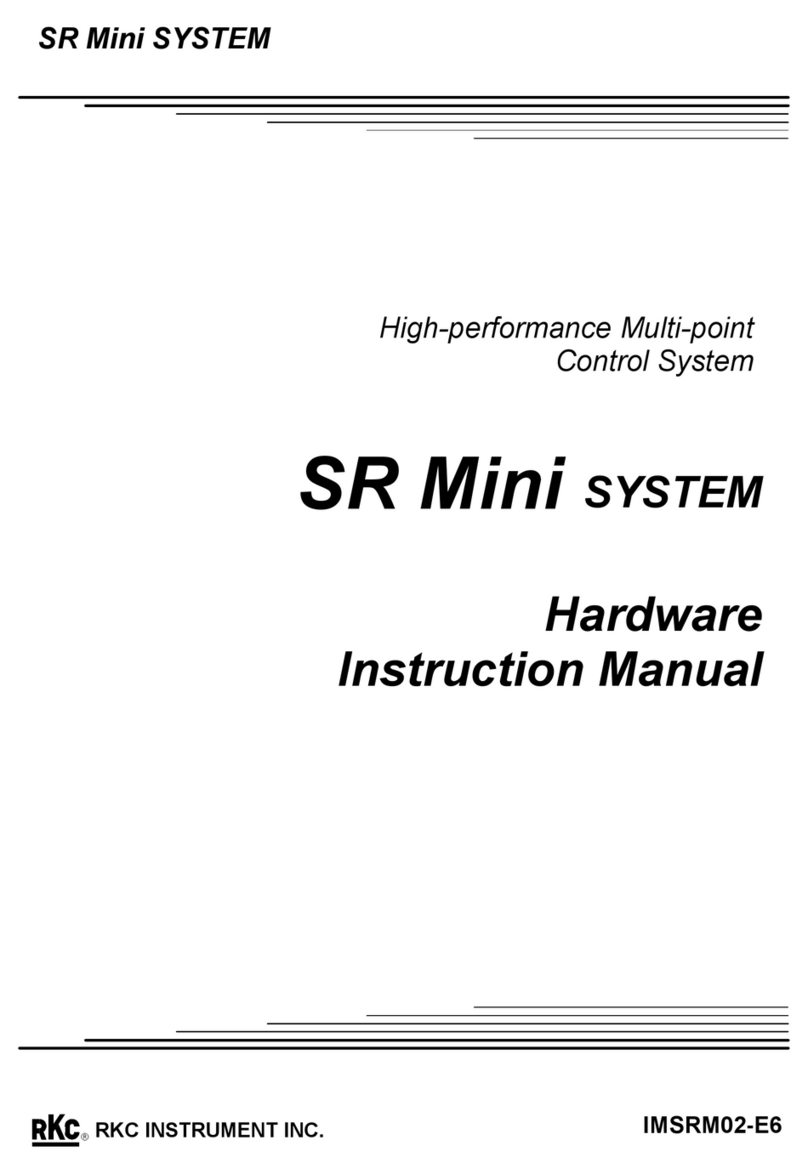
RKC INSTRUMENT
RKC INSTRUMENT SR Mini System Hardware instruction manual
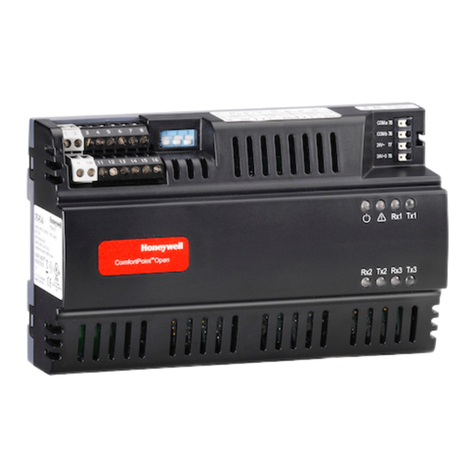
Honeywell
Honeywell ComfortPoint Open Installation and commissioning instructions
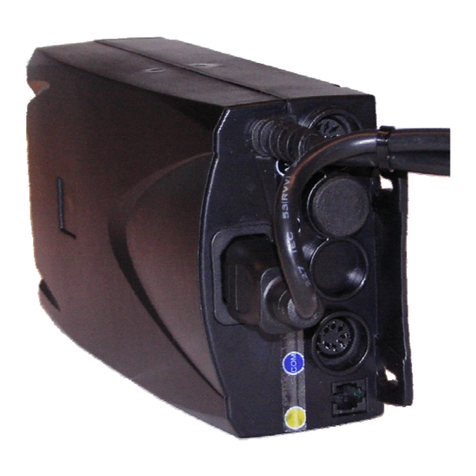
LOGICDATA
LOGICDATA LogicSP-2-1 user manual
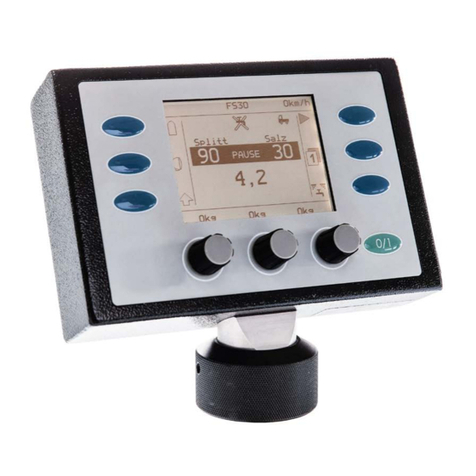
Kugelmann
Kugelmann K-TRONIC manual
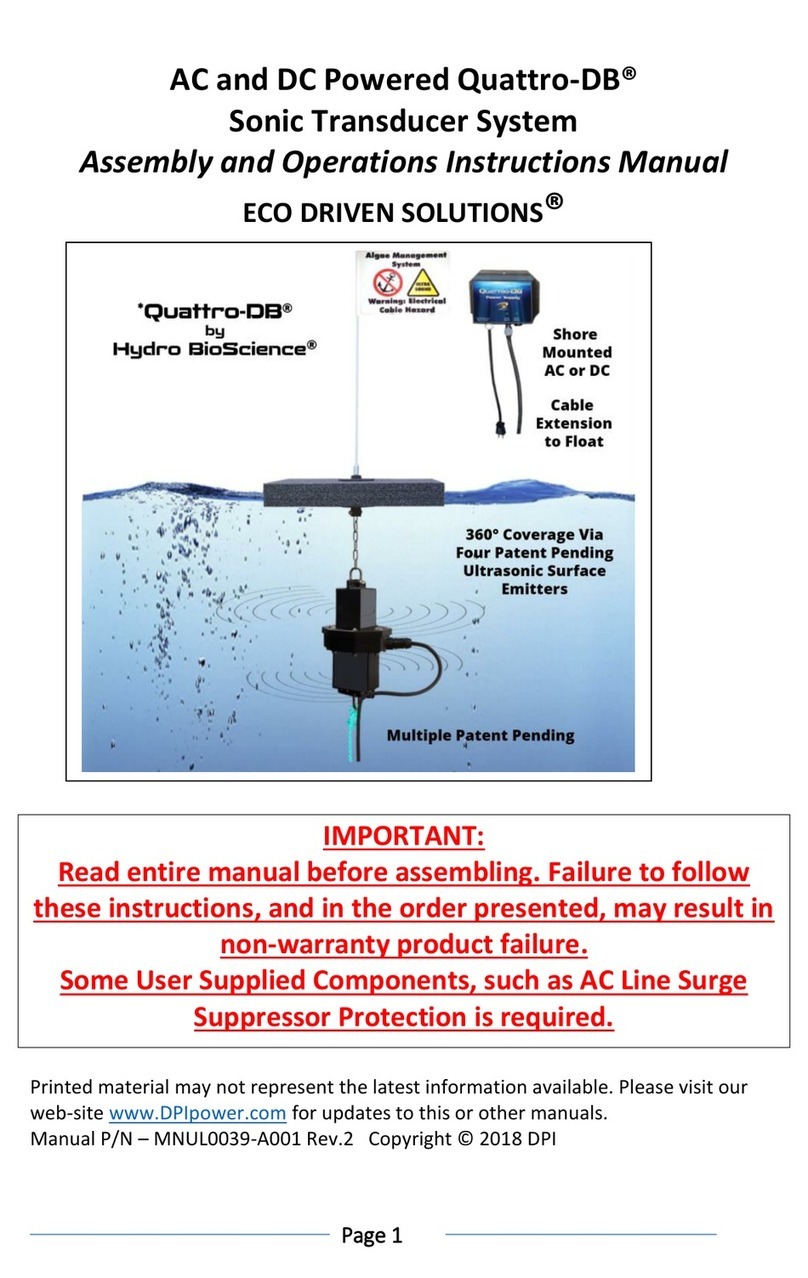
Hydro Bio-Science
Hydro Bio-Science Quattro-DB Assembly and operation instructions manual

Faudi
Faudi SLUGGUARD manual
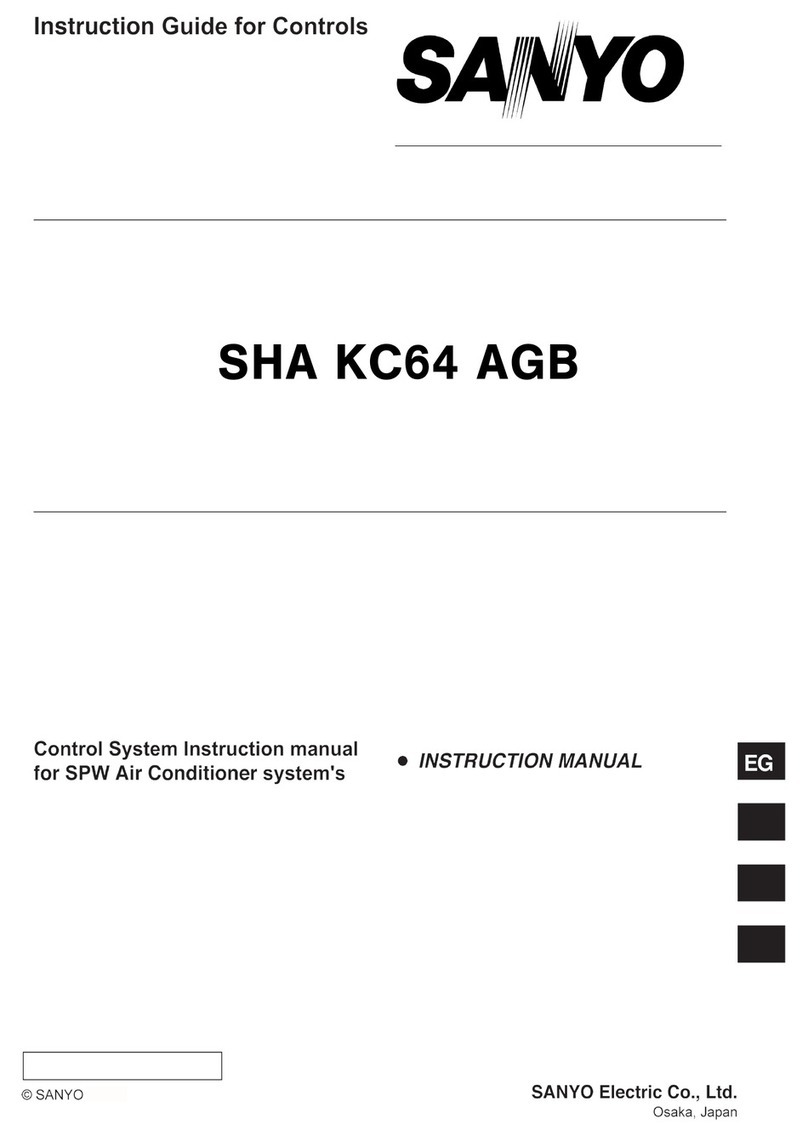
Sanyo
Sanyo SHAKC64AGB Instruction guide
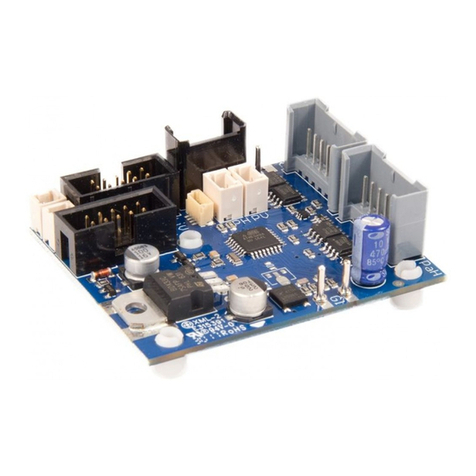
Massoth
Massoth 8410210 manual
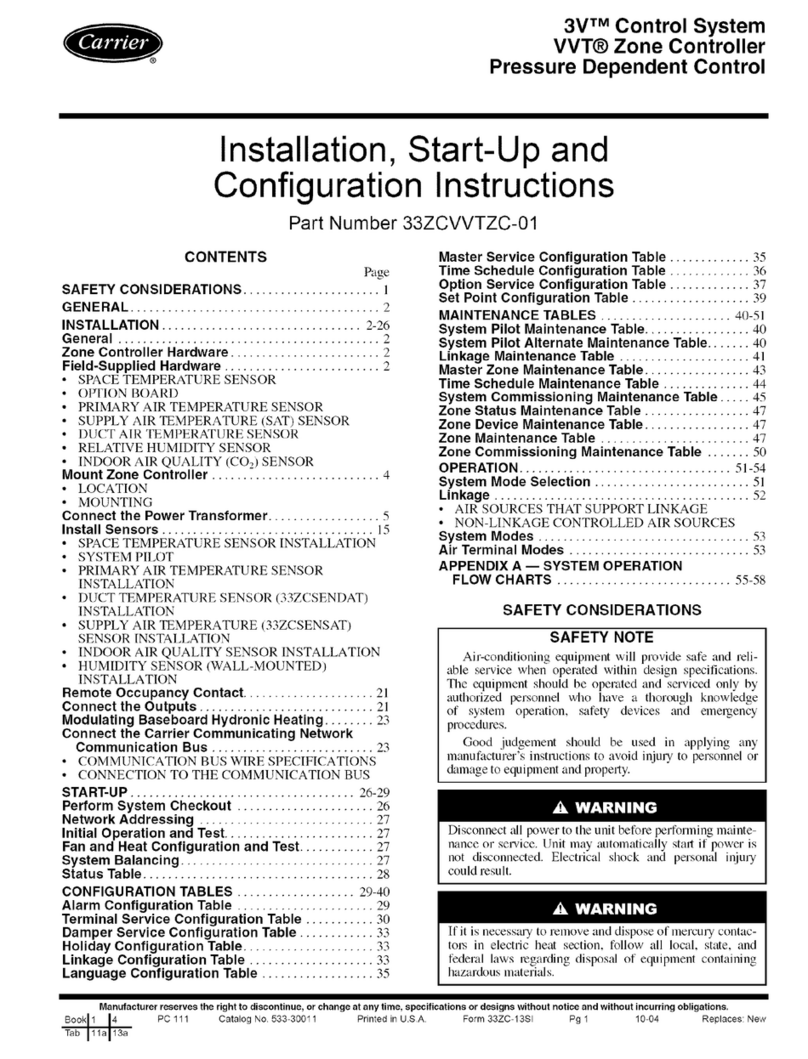
Carrier
Carrier 3V VVT 33ZCVVTZC-01 Installation and start-up instructions
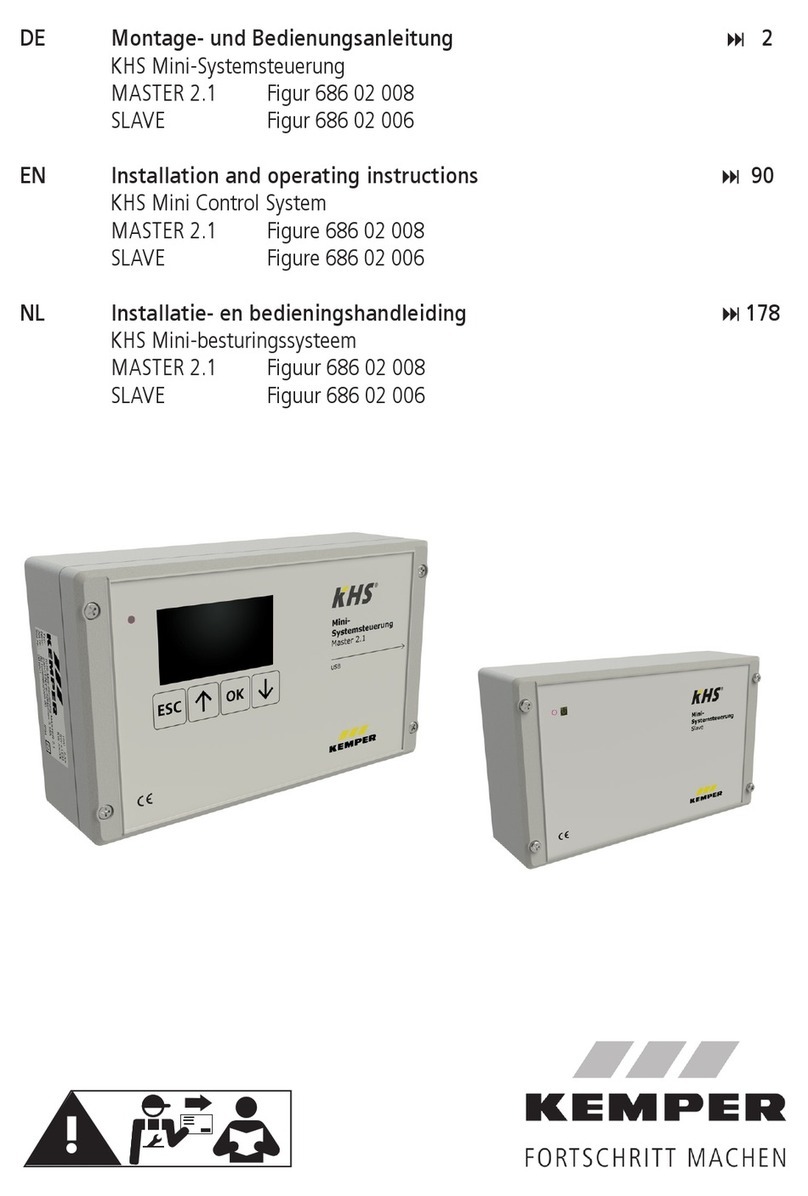
Kemper
Kemper KHS MASTER 2.1 Installation and operating instructions

